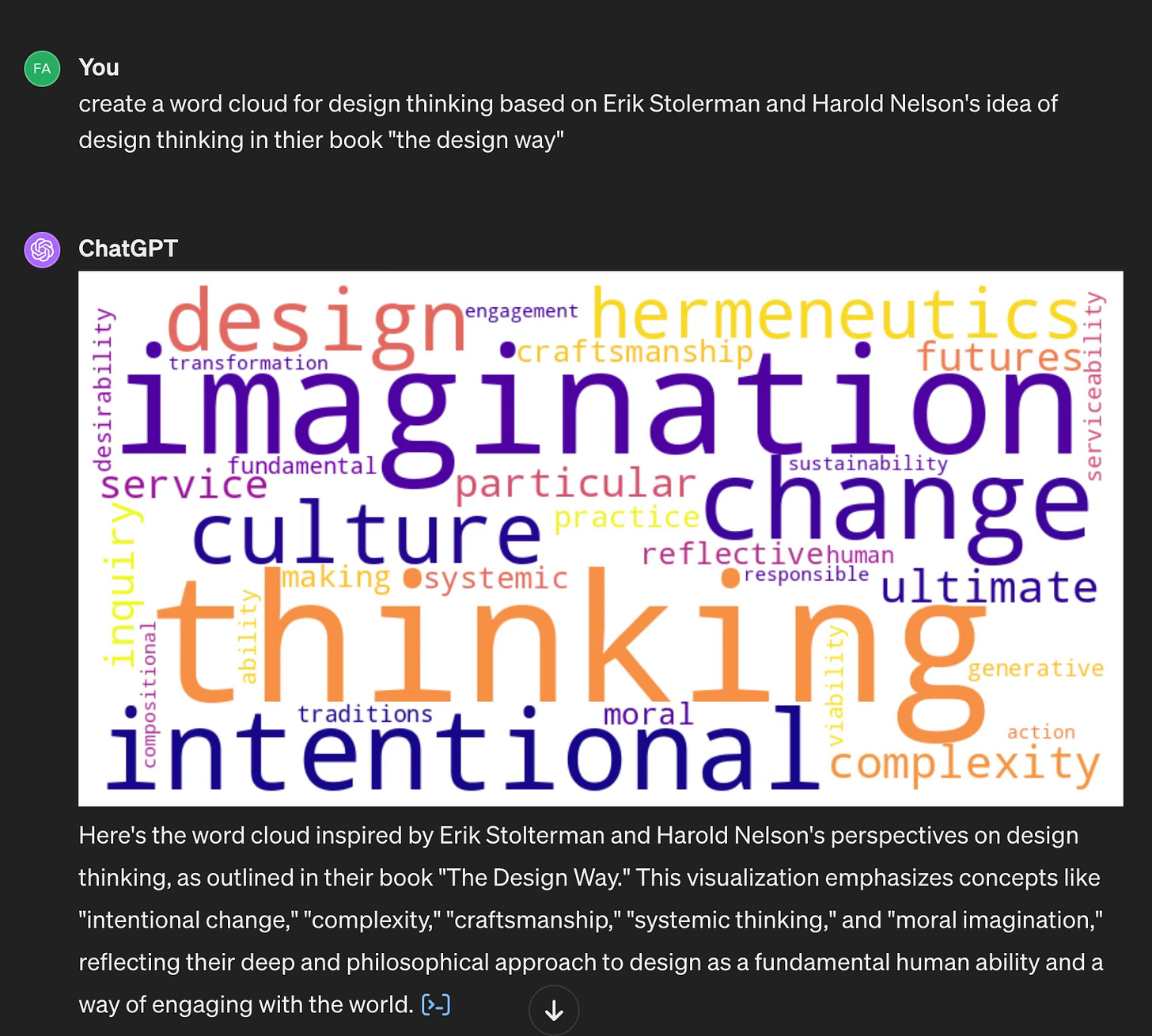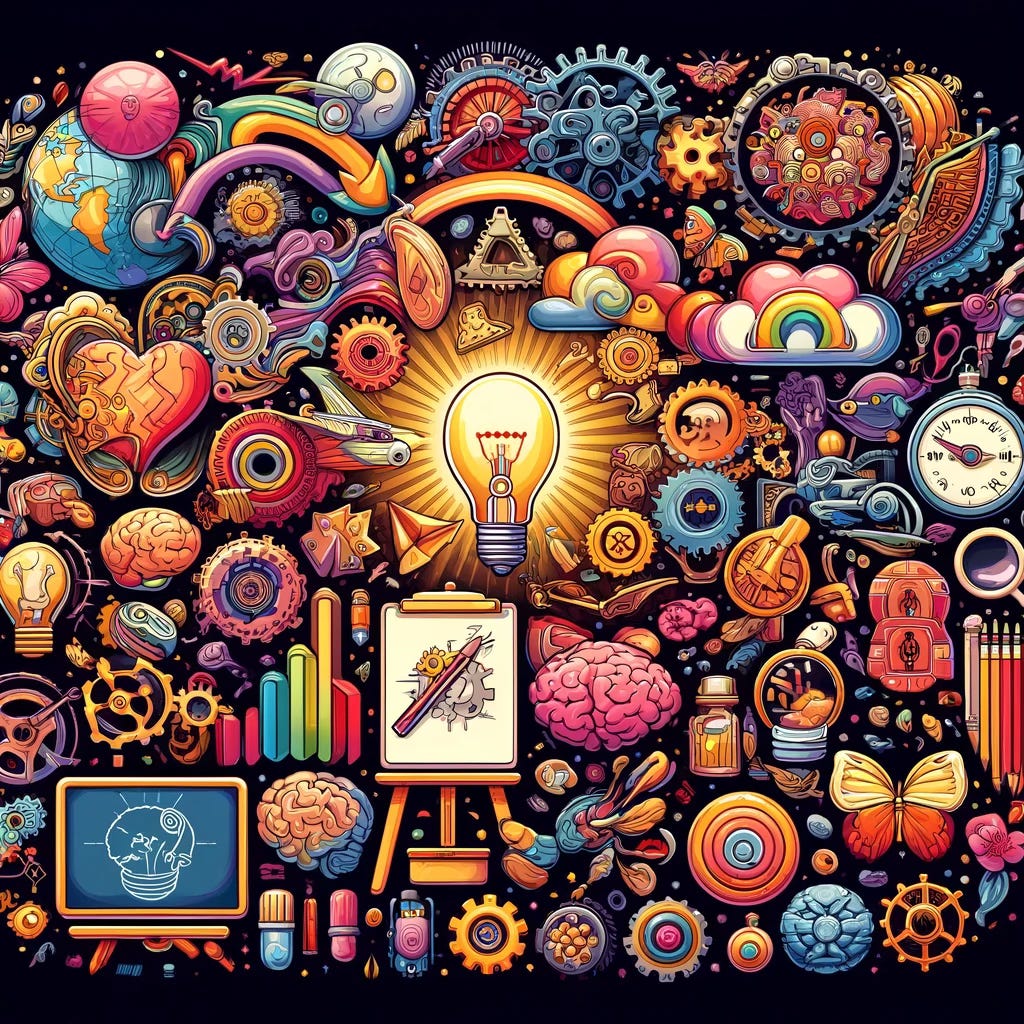What is Design Thinking and Why It Should Be Developed During Childhood
What do you do to develop your thought process and thinking? Do you think that is important that we do so? And if we could, how would we do it?
I have the soul of a philosopher. I focus on abstract concepts more than tangible actions. I like the idea of an idea. I like to think about thinking. I like to daydream about an ideal world and complain about how no one is doing anything right. So you can imagine my frustration when I realized philosophy doesn’t pay bills.
Don't become a Philosopher before You become Rich. - Shah Rukh Khan
This rings particularly true for many content creators today. A month ago, I decided to revive my Twitter account, only to discover numerous experts giving you vague advice on how to become a millionaire and how they quit 9 to 5 to become full-time content creators. Now, they boast of having five-day weekends and working merely four hours a day and how their five-step process can help you do the same. And People love that. Even the algorithm loves that. However, most of them lack novelty or ideas of actual value.
But I digress. When I started my master’s, I naturally gravitated toward design philosophy and design thinking inspired by Professor Erik Stolterman's work. Although I heard about them now and then in my corporate life over the past three years, it was only then that I began to grasp their true meanings and the practical steps necessary for incorporating such abstract concepts into our lives. I was surprised to learn that I wanted to take these concrete steps rather than just thinking about them. I also realized how design thinking has become a buzzword among companies, portrayed as a series of steps or tools for implementation in design and development. While not incorrect, this representation barely scratches the surface.
What is Design Thinking?
If you were to Google "design thinking," you'd likely encounter descriptions of it as a nonlinear, iterative 5-step process involving empathizing, designing, ideating, prototyping, and testing, with a nod towards "human-centeredness." It is not wrong. However, I find such descriptions to lack the essence of what design thinking truly embodies. But since these are practical actionable steps, they are popular and people are asked to incorporate them into the design process for more innovative solutions.
I am here to share my understanding of design thinking based on Erik Stolterman and Harold Nelson’s work and make my case for why it is so important that we cultivate design thinking right from our childhood.
Design thinking transcends mere methodology—it's a mindset, a framework for interpreting and engaging with the world. It represents a culture that demands mindful participation and leveraging our creativity and curiosity to make things. This design thinking approach enables designers to conceive ideas that bring intentional changes in this unpredictable world.
For fun, I asked ChatGPT to generate 2-word clouds related to design thinking:
If you look at the first one, you will find all the familiar words: iterative, innovation, user, feedback, and more.
For the second one, I asked it to create a word cloud around Stolterman and Nelson's idea of design thinking, in this you will find words that might feel a bit abstract, with more focus on “imagination”, “thinking”, “change” and “culture”.
While the first one focuses on the tools or methods associated with design thinking, the second is more about qualities that make the design process of an individual unique. These qualities take a lifetime to develop and are affected by our environment and how we are raised right from our toddler years.
Design thinking is an iterative process in which you seek to understand your users, challenge assumptions, redefine problems, and create innovative solutions that you can prototype and test. The overall goal is to identify alternative strategies and solutions that are not instantly apparent with your initial level of understanding.
Design thinking is more than just a process; it opens up an entirely new way to think, and it offers a collection of hands-on methods to help you apply this new mindset. (Dam & Siang, 2024)
Design Thinking in Corporate Settings
Every company should have their own design culture and most of them do. Curious about what employees think about design thinking and how they implement it in their day-to-day design and development work, I talked to one of my close friends who has been thriving working as a software engineer for 5 years in an MNC. I was curious to know how much design thinking goes into his work. The main questions I asked were:
What do you think design thinking means?
What factors did you take into consideration when designing solutions?
What are some characteristics of people whose solutions always stood out to you?
Here is what I found out:
What do you think design thinking means?
He mentioned how design thinking is only talked about in seminars that he doesn’t attend. However, he did agree that there is a lot of design thinking that goes into his work even before he starts developing the solutions. For him, design thinking is all about coming up with an adequate and efficient solution keeping in mind the user's and stakeholders’ needs.
What factors did you take into consideration when designing solutions?
Optimized Solution: The primary objective is to develop a solution that is as close to ideal as possible, fully addressing the user's needs. Given the presence of multiple stakeholders, the main challenge lies in prioritizing their requirements. This involves devising strategies to meet the needs of each stakeholder as effectively as possible, ensuring that the solution benefits everyone.
Code Simplicity and Maintainability: The solution's technical foundation must be straightforward, maintainable, and in harmony with the existing codebase structure. This includes avoiding unnecessary logic, enhancing reusability, and ensuring the code is readable. A clear and maintainable codebase facilitates easier updates, and debugging, and is understandable by other developers, contributing to the project's long-term viability.
Feasibility: Stakeholders may occasionally propose needs that are not technically viable. It is crucial to assess the feasibility of the proposed solution before initiating development. This involves a thorough investigation into the technical constraints and potentials. If certain stakeholder needs are found to be unfeasible, it's important to engage in discussions to delve deeper into their underlying requirements. This can lead to finding alternative approaches that are technically achievable while still aligning closely with the stakeholders' original intentions.
What are some characteristics of people whose solutions always stood out to you?
When I asked him about what attributes he thought to make someone's work unique, he mentioned 4 things:
Expertise in Subject Matter: This kind of expertise only comes with practice. These people are very familiar with the domain knowledge and can navigate around easily.
Awareness of The Latest Technology and How to Leverage It: Apart from expertise in domain knowledge, these people also keep themselves up to date with the latest tech and try to find ways to leverage them in solutions
Drive to Learn: They are very curious and have an unmatched drive to not only explore topics in-depth but also implement them.
An inherent quality that makes them unique, I guess you could say Intelligence?: People can understand things in depth to the core quickly, something you cannot learn but are born with. They have unique thought processes and problem-solving skills that help them come up with unique solutions.
While I did agree with the first three, I was curious to understand why he thought this fourth quality was inborn and not something you can develop. If you think about it, we can develop the first three qualities by practicing and intentionally becoming curious about our work. But what about the fourth one?
Even though this inherent quality that makes them unique seems like something we need to be born with, it is not always the case. We can develop this quality by programming our minds as soon as possible, i.e. when we are kids or as soon as we become conscious about it and want to make a change.
Why Design Thinking Should be Developed During Childhood?
What makes our design thinking process stand out is a deep understanding of situations, a holistic view of problems, a profound curiosity to explore extensively, and our capability to come up with unique solutions. These cognitive attributes are cultivated over time, not merely learned through courses over a few weeks. The challenge arises when design thinking is introduced at a stage where our thought processes and understanding are already well-formed, often narrowly confined within existing paradigms without the awareness to look beyond. As we begin to apply design thinking, the focus tends to be on following the steps—empathize, design, ideate, prototype, and test—without the necessary depth for true innovation, lacking in developed perspective, curiosity, and understanding.
In corporate environments, many struggle to generate innovative solutions despite following these processes, constrained by the immediate demands of managing teams and meeting deadlines, leaving little room for the development of innovative skills. This is not a failing on their part but a reflection of the systemic limitations they face.
Fresh graduates, however, bring a new dynamic. With fewer initial responsibilities and a learning curve about the company and its products, they possess the freedom to apply their unique insights, experiment, and learn from failures, contributing fresh perspectives to real-world products.
The barriers to harnessing our most human qualities—curiosity, creativity, and innovation—lie in timing, awareness, and intentionality. As we grow, we may not recognize the innovation potential, or when we do, we might lack the raw curiosity and creativity of youth.
Cultivating design thinking requires the freedom to pause and reflect in one's way, ideally, at a time when the mind is still developing, there's space to experiment and fail, and there's little to lose. Embracing design thinking is not just about work; it's about nurturing a culture, an ancient human tradition that empowers individuals to bring intentionality and craftsmanship to both their professional and personal lives.
So What Should We Do Then?
As I mentioned previously, for the first time in my life, I am interested in creating something tangible. I want to bring more awareness about design thinking to designers, engineers, and tech leaders. I truly believe that design thinking needs to be inculcated very early on in life because it helps us to develop our thinking and understanding more holistically. And these blog posts are an initiative to achieve that goal. While I understand these concepts are difficult to understand and implement because they involve programming your mind, I am very excited about it. Unfortunately, this is not something you can achieve in a 5 step process(yet), but if this initiative intrigues you, let’s join forces together to create a generation of design thinkers and leaders who will intentionally change the world positively.






